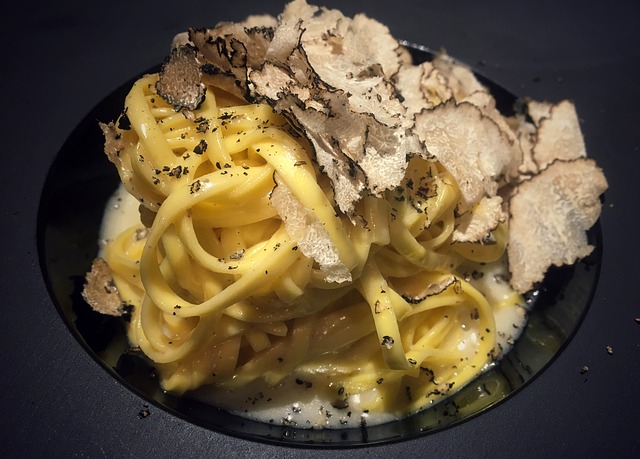For many gourmet connoisseurs, the taste of a truffle is rather nutty. Chefs refer to it as possessing an Umani rich flavor that is savory or meatier, and depending on the region, will determine how deeply pungent it tastes.
There are two main types of truffles that consist of a range of tastes, smells, and appearances depending on the region:
1. With the white truffle (aka edible gold), considered the granddaddy of the truffles as the most expensive of the truffle family and the most difficult to cultivate, has been sold from $3000 to $5000 a pound. It grows in the Piedmont Region of Northern Italy and can only be harvested during the winter months. These truffles grow underground at the base of trees which is why specially trained dogs are used to locate their targets. White truffles are usually added to dishes as garnish in pasta, risottos, polentas, eggs, cheese, oils, creams, seasoned butter, and sauces.

